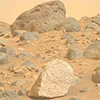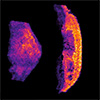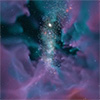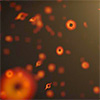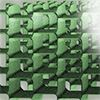Sep 10, 2025 A thin, glass-like layer could be the key to longer-lasting, cost-effective solid-state batteries. (Nanowerk News) In everyday life, we use many protective barriers: Sunscreen shields us from the sun, umbrellas keep us dry in the rain and oven mitts protect our hands from hot pans. Similarly, batteries...
Blog
Can nanobots play follow the leader?
The Pennsylvania State University. "Can nanobots play follow the leader?." Nanowerk, 10 September 2025, https://www.nanowerk.com/nanotechnology-news3/newsid=67600.php. The Pennsylvania State University. (2025, September 10). Can nanobots play follow the leader?. Nanowerk. https://www.nanowerk.com/nanotechnology-news3/newsid=67600.php The Pennsylvania State University, "Can nanobots play follow the leader?," Nanowerk, September 10, 2025, https://www.nanowerk.com/nanotechnology-news3/newsid=67600.php.
Tough self-healing gels could make wearables more durable
Sep 10, 2025 A new material design combines phase separation and lithium bonding to create ionogels that are both strong and self-healing, enabling durable, flexible components for wearable electronics. (Nanowerk Spotlight) Electronic materials are increasingly expected to do what skin does without effort: stretch, bend, recover, and repair themselves. As...
Researchers uncover potential biosignatures on Mars
Sep 10, 2025 A new study has revealed potential chemical signatures of ancient Martian microbial life in rocks examined by NASA's Perseverance rover. (Nanowerk News) The findings, published by a large international team of scientists, focus on a region of Jezero Crater known as the Bright Angel formation — a...
A hydrogel platform for long-lasting, precision drug delivery
Sep 10, 2025 Scientists created a drug delivery platform to improve adherence, cut costs, prevent hospitalizations, and enhance treatment effectiveness. (Nanowerk News) Taking medications on time, in the right dose and for the prescribed duration can be challenging for patients, and failure to do so comes with steep costs, causing...
Studying the atmosphere of a potentially habitable planet 40 light-years away
Sep 10, 2025 JWST data reveal first insights on TRAPPIST-1 e, a planet in the habitable zone that may have conditions suitable for supporting life. (Nanowerk News) University of Michigan researchers in an international team revealed that a rocky planet in a distant star’s “habitable zone” may have an atmosphere....
Simulations solve centuries-old cosmic mystery
University of Surrey. "Simulations solve centuries-old cosmic mystery - and discover new class of ancient star systems." Nanowerk, 10 September 2025, https://www.nanowerk.com/news2/space/newsid=67604.php. University of Surrey. (2025, September 10). Simulations solve centuries-old cosmic mystery - and discover new class of ancient star systems. Nanowerk. https://www.nanowerk.com/news2/space/newsid=67604.php University of Surrey, "Simulations solve centuries-old...
Exotic phase of matter realized on a quantum processor
Technical University Munich. "Exotic phase of matter realized on a quantum processor." Nanowerk, 10 September 2025, https://www.nanowerk.com/nanotechnology-news3/newsid=67605.php. Technical University Munich. (2025, September 10). Exotic phase of matter realized on a quantum processor. Nanowerk. https://www.nanowerk.com/nanotechnology-news3/newsid=67605.php Technical University Munich, "Exotic phase of matter realized on a quantum processor," Nanowerk, September 10, 2025,...
An exploding black hole could reveal the foundations of the universe
Sep 10, 2025 Physicists think we could see such an explosion in the next 10 years - and it would 'revolutionize physics and rewrite the history of the universe'. (Nanowerk News) Physicists have long believed that black holes explode at the end of their lives, and that such explosions happen—at...
Cat whiskers guide scientists to smarter, tougher wearable sensors
Shinshu University. "Cat whiskers guide scientists to smarter, tougher wearable sensors." Nanowerk, 10 September 2025, https://www.nanowerk.com/nanotechnology-news3/newsid=67599.php. Shinshu University. (2025, September 10). Cat whiskers guide scientists to smarter, tougher wearable sensors. Nanowerk. https://www.nanowerk.com/nanotechnology-news3/newsid=67599.php Shinshu University, "Cat whiskers guide scientists to smarter, tougher wearable sensors," Nanowerk, September 10, 2025, https://www.nanowerk.com/nanotechnology-news3/newsid=67599.php.




